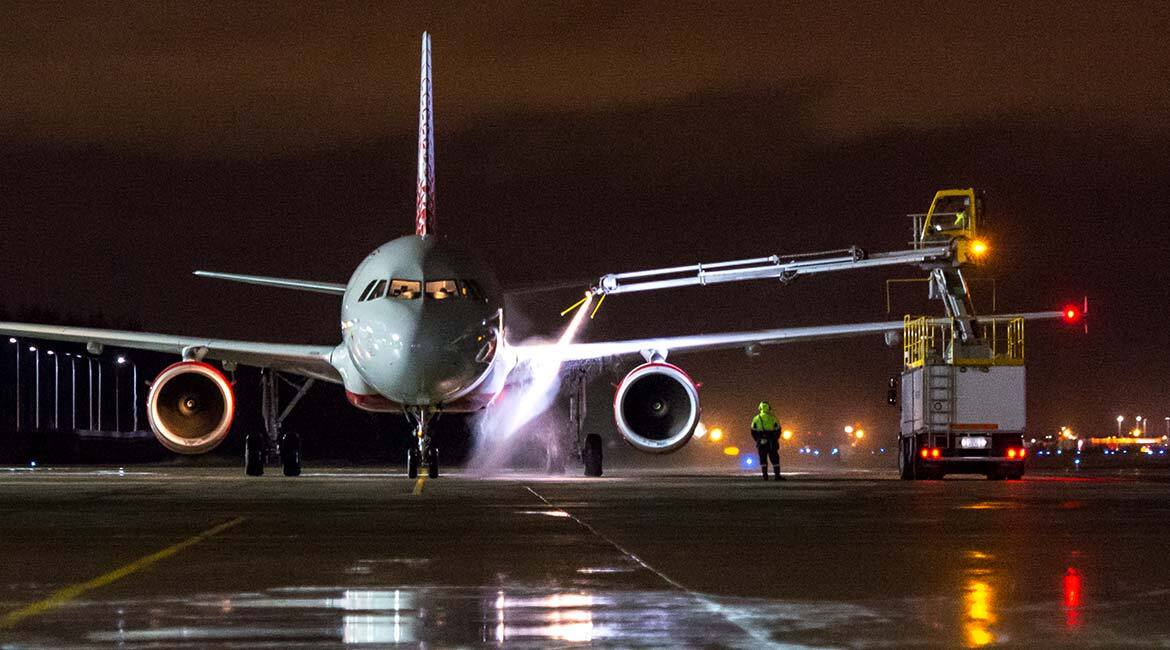Combining Functional Resonance Analysis Method with Fuzzy Logic

Purchased on Istockphoto.com. Copyright.
Innovative safety management tools are needed to cope with the complex properties of modern sociotechnical systems. Such tools must account for the complexity without oversimplifying the representation of observed variables. The aim of this project is to propose a systemic approach to performance analysis from a human-centered perspective. To this end, a hybrid model combining qualitative FRAM and fuzzy logic was designed for the quantification of natural language. The proposed approach was applied to analyze the working environment of aircraft deicing operations focusing on the human factor as the main component and driver for successful performance. The preliminary results are promising and in alignment with literature findings and field observations. Keywords: FRAM, fuzzy logic, aircraft deicing, safety management, sociotechnical system.
Introducing the sociotechnical concept into the field of safety management leads to a paradigm shift emphasizing the need to adopt a systemic complexity-oriented perspective. The majority of applied tools to achieve this objective rely on natural language to facilitate an adequate characterization of complex variables. In our project, extending over the last three years, we planned to introduce a new approach combining the Functional Resonance Analysis Method (FRAM) (Hollnagel, 2004 & 2012) with fuzzy logic (Zadeh, 1965) as a tool to quantify linguistic variables. FRAM in its basic form is a qualitative tool and relies on linguistic ordinal scales to characterize performance variability. The hybrid model was applied to analyze the context of aircraft deicing operations, a high-reliability organization, from a human-centered systemic perspective. After running several instantiations of the model, the simulation results presented numerical scores to quantify the function quality of the outputs.
Defining and Characterizing FRAM Functions
To achieve our objective, the FRAM functions were redefined and characterized as rule-based fuzzy inference systems (FIS). A FRAM model provides a functional representation of the system, in which a function represents a specific task or objective. Each function has six aspects, of which five serve as incoming values and one as output (Figure 1). The functions are linked to each other to represent the dominant relationships of the system and construct a map of the system. The quality of the output is then evaluated using natural language in terms of two phenotypes: timing and precision (Table 1).

Figure 1. Graphical representation of a function in FRAM
Table 1. Qualitative characterization of variability in FRAM

Two types of variability can be distinguished for each function: internal from within the function, and external through functional couplings and the working environment. Each function is then defined as a hierarchical fuzzy inference system (Figure 2) with an internal FIS to account for the Internal Variability Factor (IVF) and a higher-order FIS to account for the combined variability of both the IVF and the External Variability Factor (EVF). A list of eleven Common Performance Conditions (CPC) was selected to anticipate the possibility for potential internal variability, which can be evaluated on a scale of zero to ten. A rule-based fuzzy inference system is then constructed to fuzzify the scores of all respective performance conditions and generate an aggregated quantifier for the IVF of each function. The impact of the timing and precision phenotypes is combined and simplified into three classes: highly variable, variable and non-variable. The numerical outcome represents an indicator for possible variability whether negative or positive, in the function’s output. On a spectrum of 0 to 1.5, 1 represents a non-variable output. Any value below 1 represents negative variability, while any value above 1 represents positive variability (Figure 3).

Figure 2. The three stages of a fuzzy inference process

Figure 3. Simplified representation of a FRAM function as an FIS
Application Scenarios
An application scenario was constructed based on two deicing-related accidents, namely the Scandinavian Airlines flight 751 crash, in 1991, and the Air Maroc accident in Mirabel, in 1995. A total of 17 functions were defined: four background functions (non-variable) and 13 foreground functions (possibly variable). To induce variability into the defined setup, assumptions over prevailing performance conditions, such as inadequate airliner guidelines present in extreme weather conditions, inadequate training of flight crew, and high temporal stress were formulated.

Figure 4. Graphical representation of the FRAM model in the FRAM Model Visualizer (FMV) with numerical outputs
Based on the formulated assumptions in our simulation, we can see possible positive variability for functions with an output quality of one or more, and possible negative variability for functions with scores below one. The IVF scores and the output were then plotted on the graphical representation generated in the FRAM Model Visualizer (FMV) to provide an illustrative map of the relationships within the studied system (Figure 4).
Conclusions
The preliminary results are promising and present a comprehensible example on how to construct such a model. This approach facilitates computing with words to run simulations of complex working environments, maintaining the advantages of both methods to provide more representative and objective results.
For more information, please refer to the main article:
Slim, H., Nadeau, S. (2019). Hussein Slim, Sylvie Nadeau. 2019. « A proposal for a predictive performance assessment model in complex sociotechnical systems combining fuzzy logic and the Functional Resonance Analysis Method (FRAM) ». American Journal of Industrial and Business Management. vol. 9, nº 6. p. 1345-1375.
Acknowledgments: This research was funded by the Arbour Foundation (Montreal, QC), the National Sciences and Engineering Council of Canada (NSERC) and École de technologie supérieure (ÉTS).


